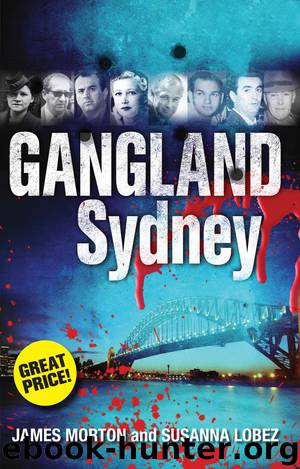Gangland Sydney by James Morton

Author:James Morton
Language: eng
Format: epub
ISBN: 9780522860399
Publisher: Melbourne University Press
Published: 2011-06-01T16:00:00+00:00
9
Sex and the Sydney Citizen
While 1860s Sydney might not have had the palatial premises of some of Melbourne’s brothels, prostitutes of the time were still hard at work. A pupil of the late Professor John Woolley, conducting a rudimentary survey in 1873, found that prostitutes were mainly:
women who have been in a state of menial servitude; and who from the love of idleness and dress, together with the misfortune of good looks, in some instances, have mostly from inclination resorted to prostitution for a livelihood … girls were corrupted by idle and frivolous habits encouraged or contracted on board ship when not subjected to the most careful supervision.
His research showed that two or three girls would take a house together in Woolloomooloo or live in a boarding house run by a retired whore. Prostitutes mainly worked at the Prince of Wales Theatre before it was burnt down, at Belmore markets on Saturday nights, the Domain Gardens on Sunday afternoons and George Street on Sunday nights. Elizabeth Street provided an easy escape across the racecourse after they had robbed their clients. Some were as young as twelve; many were diseased. He also found there was a certain amount of homosexual prostitution, with a degree of cross-dressing. Then, as now, many of the city’s cabmen worked hand-in-hand with the prostitutes.
New South Wales was late to implement prostitution-specific laws. Only in 1908 was the Police Offences (Amendment) Act passed. This criminalised soliciting, a male living on the earnings of prostitution, brothel keeping and leasing premises for the purposes of prostitution. Ironically, these legislative changes had almost the opposite effect of that intended, changing prostitution from a free-wheeling trade to an industry in which the girls were controlled by organised crime. The dynamics of prostitution changed and many prostitutes were forced to work in houses owned by criminal networks. Throughout the 1920s and 1930s prostitution was inexorably linked with sly-grog and cocaine traders.
Most of the immigrant Italian population of the era arrived in Australia in the 1920s and totalled well over 40 000 by the end of the decade. From the moment of their arrival they were blamed for most things criminal—demanding with menaces, living off immoral earnings, theft. However, the historian and author Richard Evans regards the suggestion of early organised Italian crime in Australia as an overrated concept. He believes that, at a time when the White Australia policy was an article of faith, the local population was bigoted and hostile towards a conspicuously male-dominated society in which few were married and most were law-abiding.
The Italians were also accused of running the white slave traffic for the benefit of the cane field workers in New South Wales, but they were not the only ones. Smith’s Weekly ran an experiment, taking three girls to Chinatown to sell. Naturally, the reporters were obliged to witness scenes of degrading bargaining before they took the girls away unsold. What the girls had to say about things went unrecorded.
After World War I Kate Leigh and Tilly Devine may have been Sydney’s brothel queens, but they were, putting it kindly, plain-looking.
Download
This site does not store any files on its server. We only index and link to content provided by other sites. Please contact the content providers to delete copyright contents if any and email us, we'll remove relevant links or contents immediately.
Mindhunter: Inside the FBI's Elite Serial Crime Unit by John E. Douglas & Mark Olshaker(8707)
Wiseguy by Nicholas Pileggi(5320)
Hitman by Howie Carr(4830)
Room 212 by Kate Stewart(4741)
Secrecy World by Jake Bernstein(4390)
Killers of the Flower Moon: The Osage Murders and the Birth of the FBI by David Grann(4191)
Breaking Free by Rachel Jeffs(4013)
Papillon (English) by Henri Charrière(3908)
Killers of the Flower Moon by David Grann(3753)
Say Nothing by Patrick Radden Keefe(3726)
American Kingpin by Nick Bilton(3510)
The Secret Barrister by The Secret Barrister(3424)
Molly's Game: From Hollywood's Elite to Wall Street's Billionaire Boys Club, My High-Stakes Adventure in the World of Underground Poker by Molly Bloom(3337)
Mysteries by Colin Wilson(3253)
In Cold Blood by Truman Capote(3140)
I'll Be Gone in the Dark by Michelle McNamara(2888)
Signature in the Cell: DNA and the Evidence for Intelligent Design by Stephen C. Meyer(2879)
Rogue Trader by Leeson Nick(2829)
Bunk by Kevin Young(2809)
